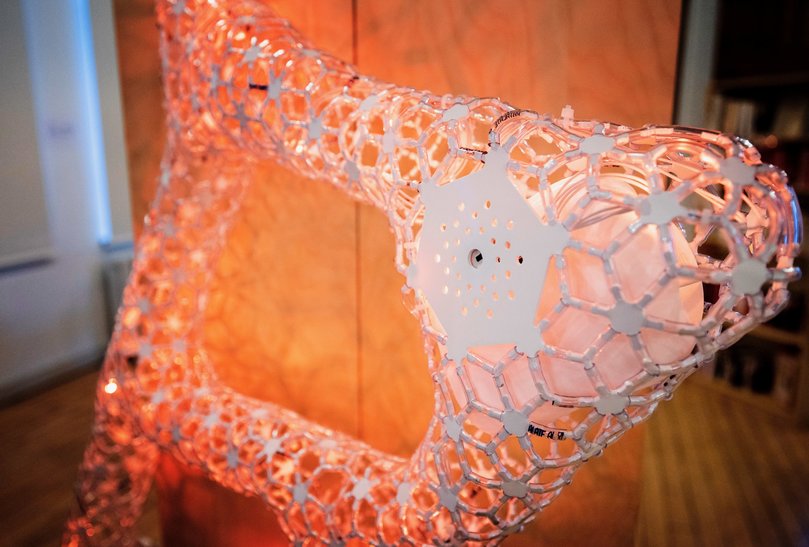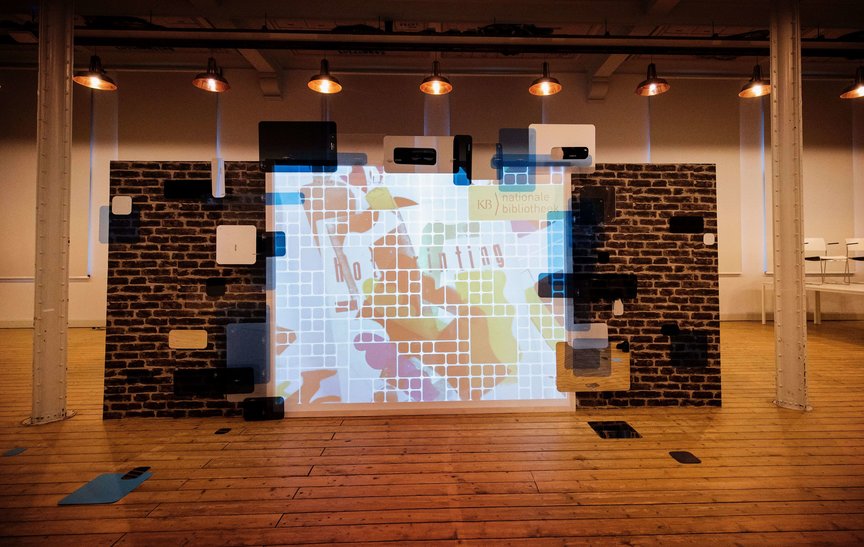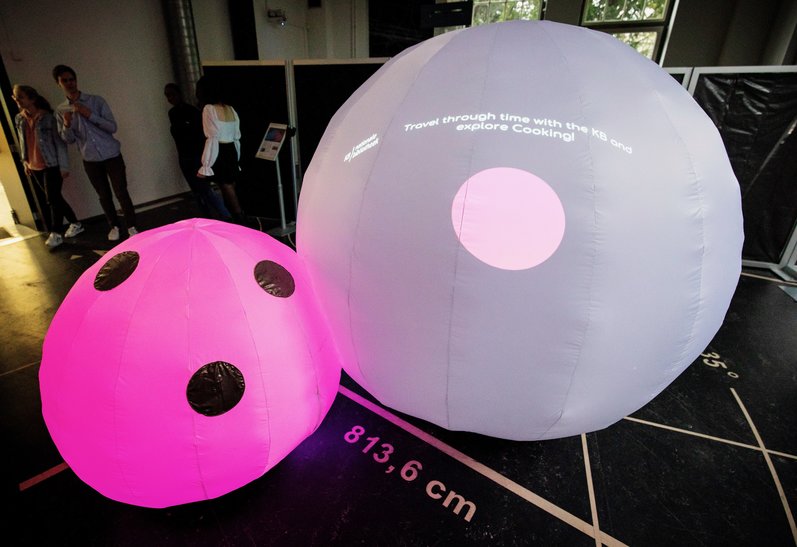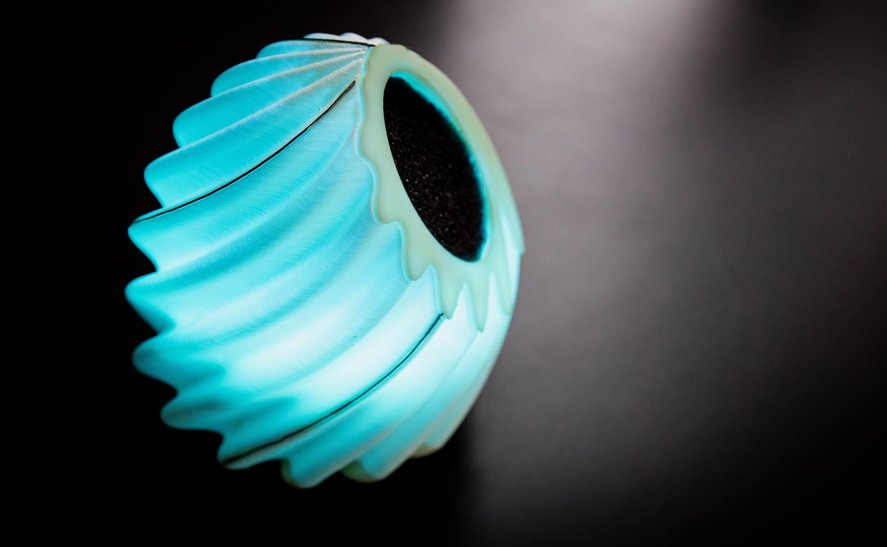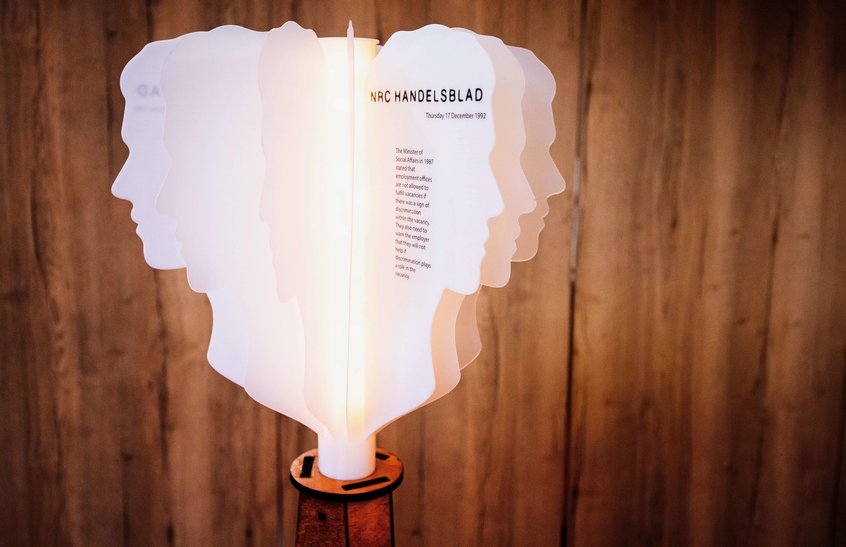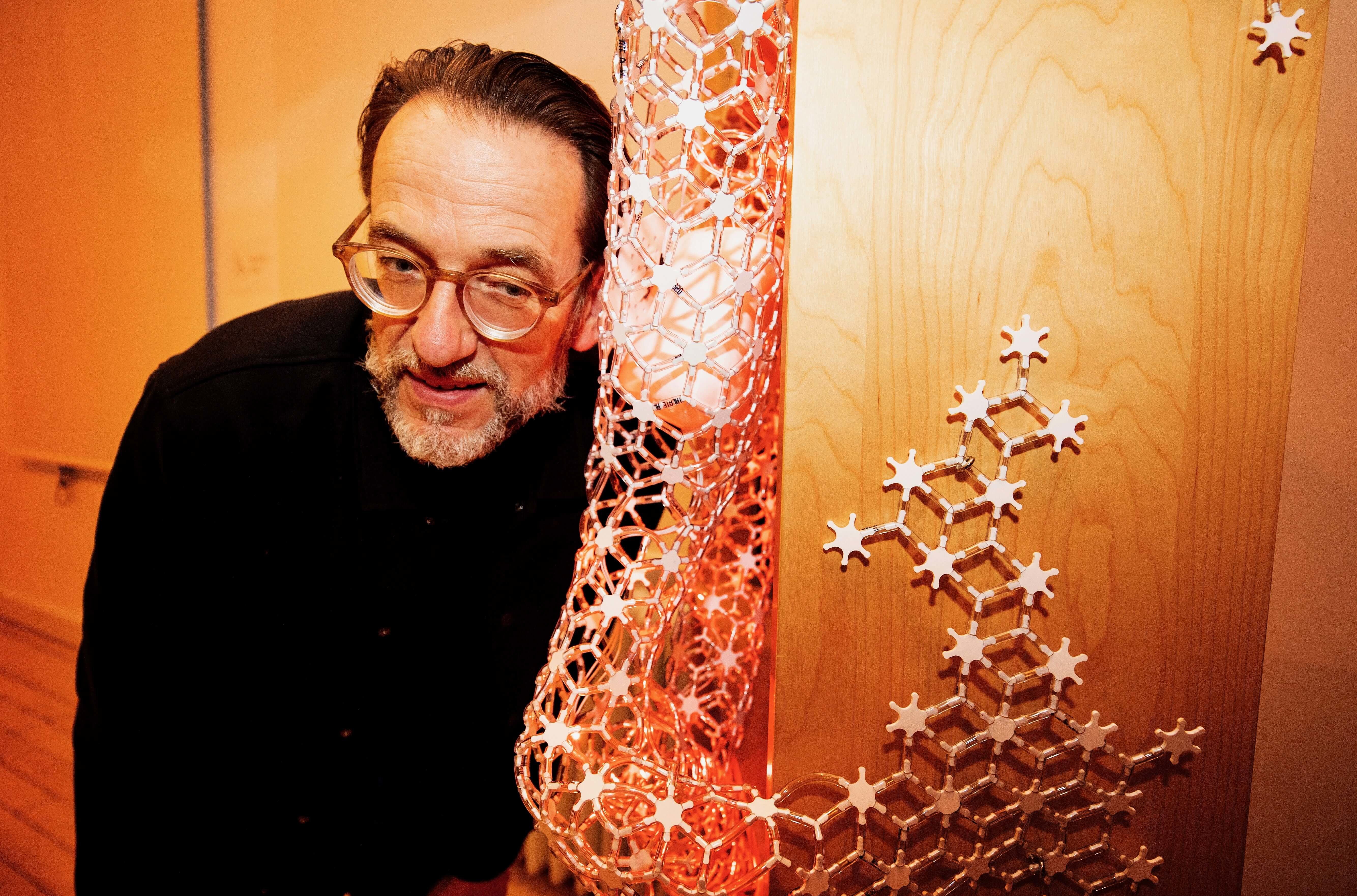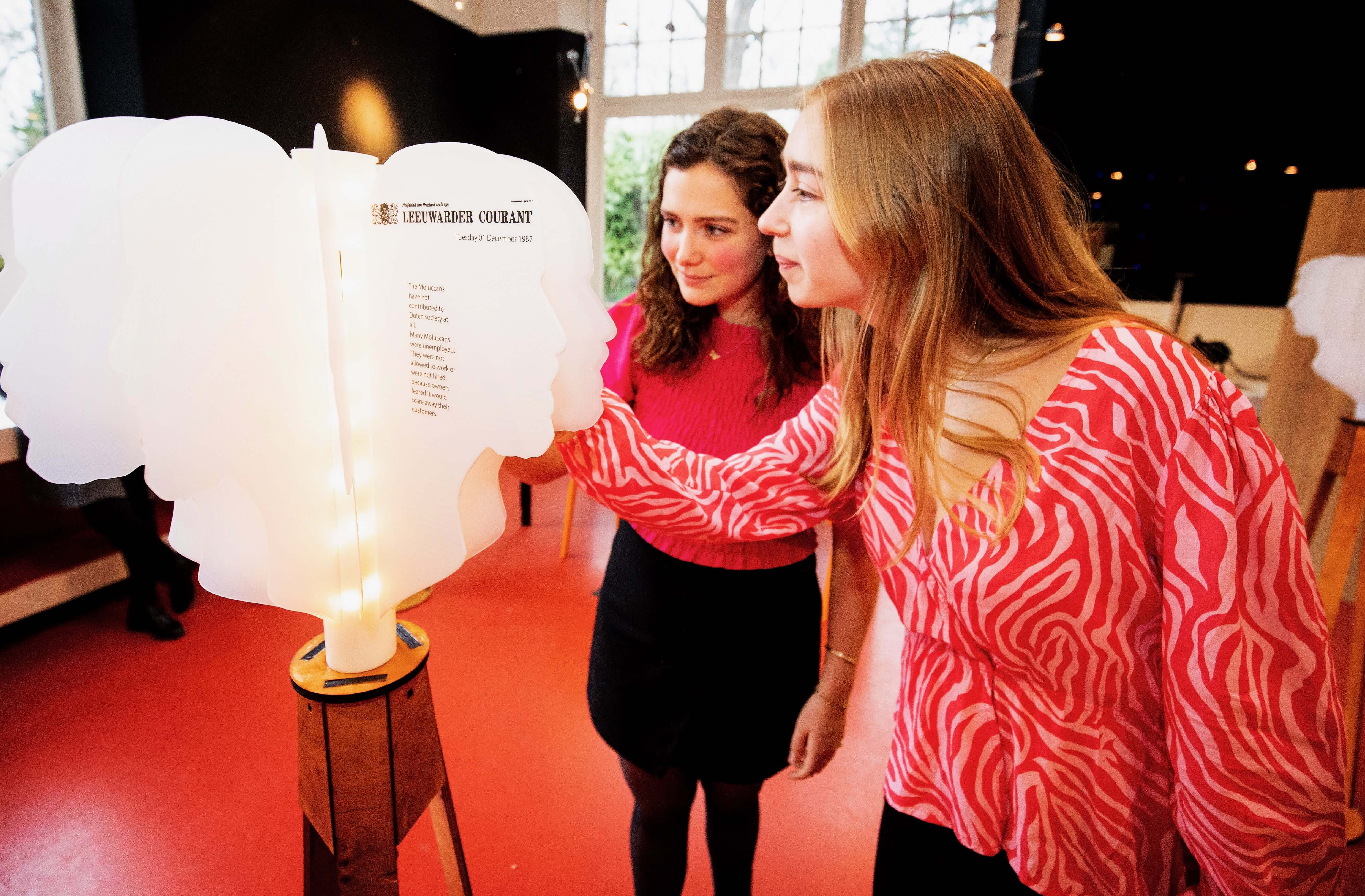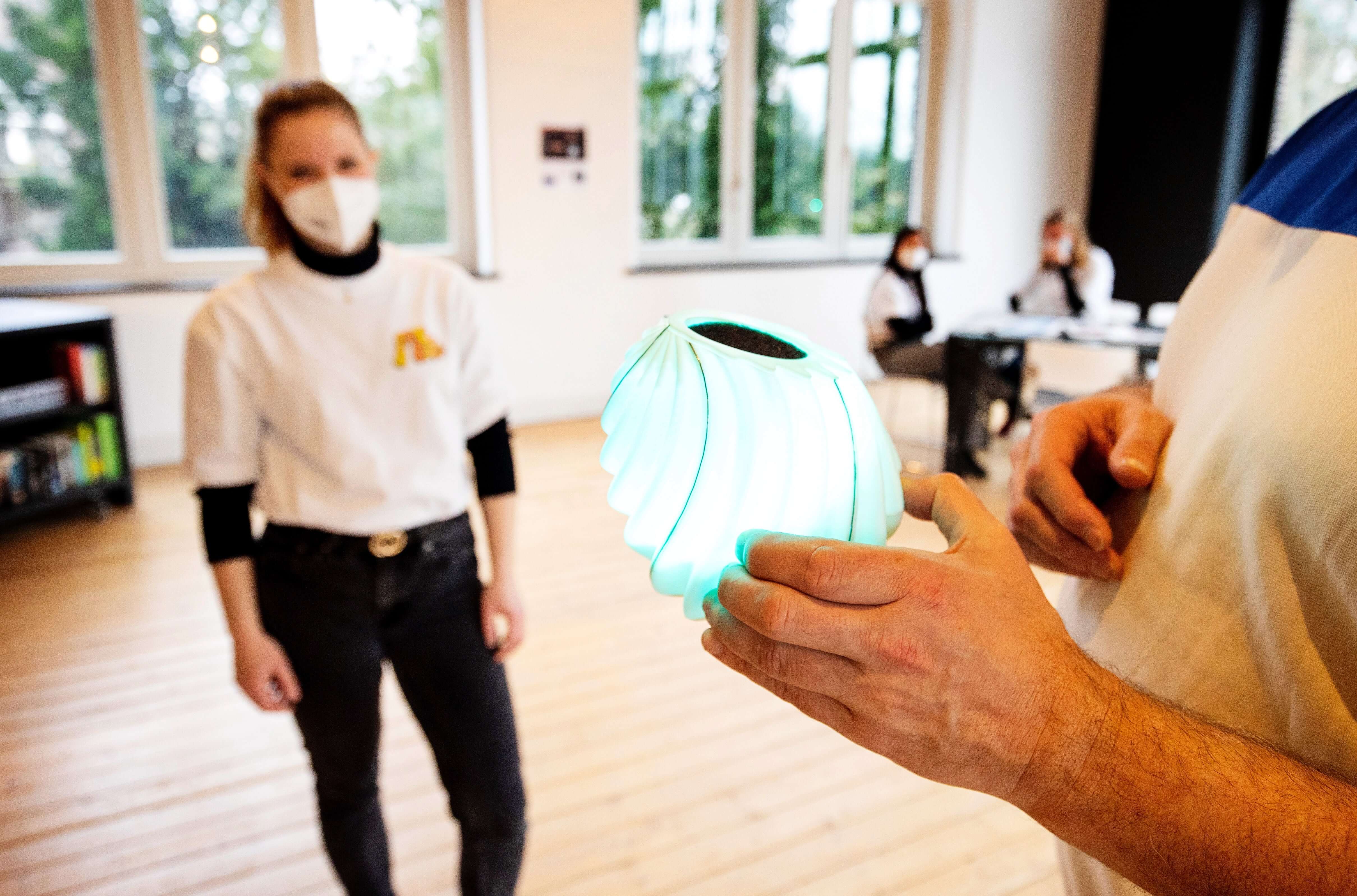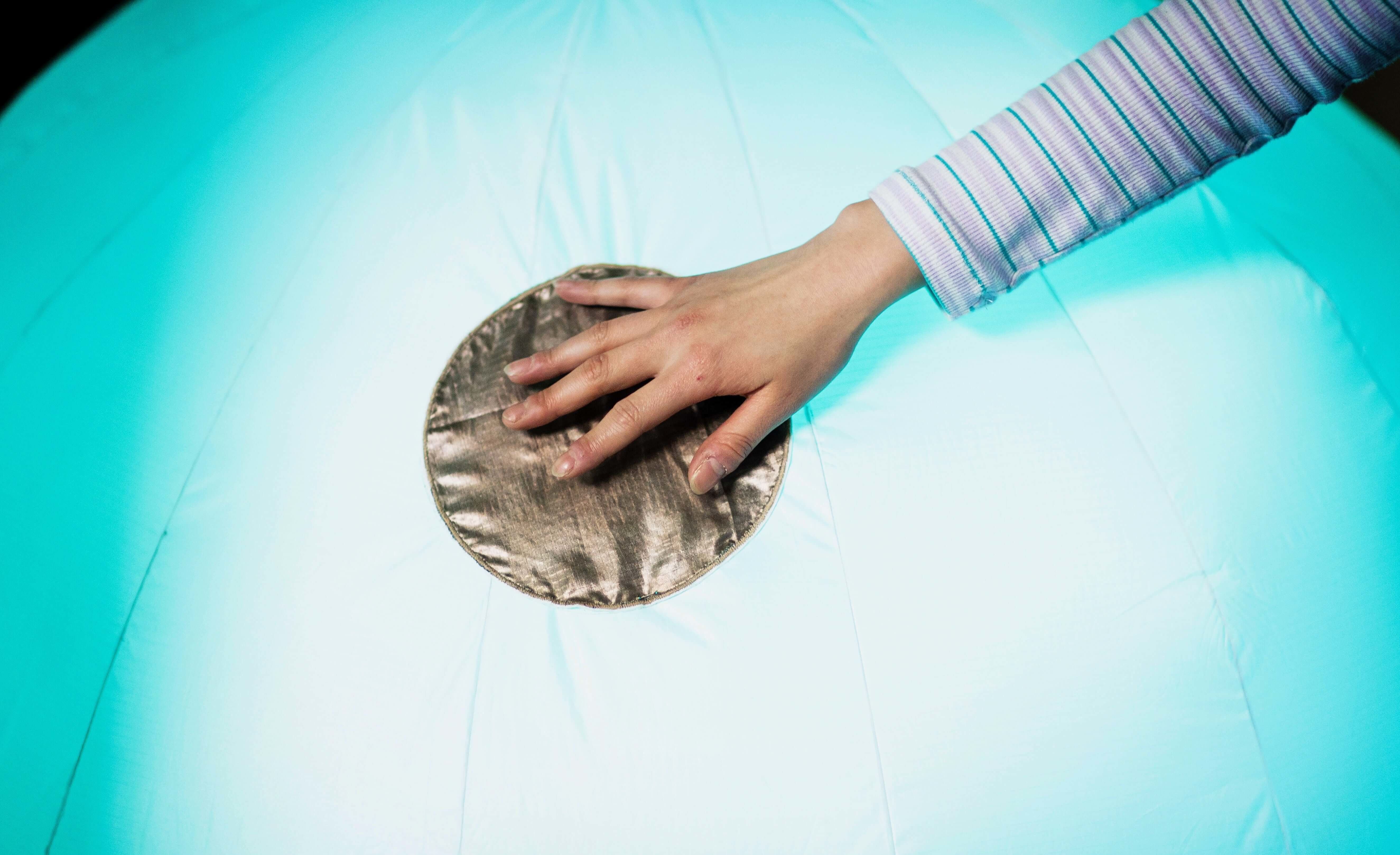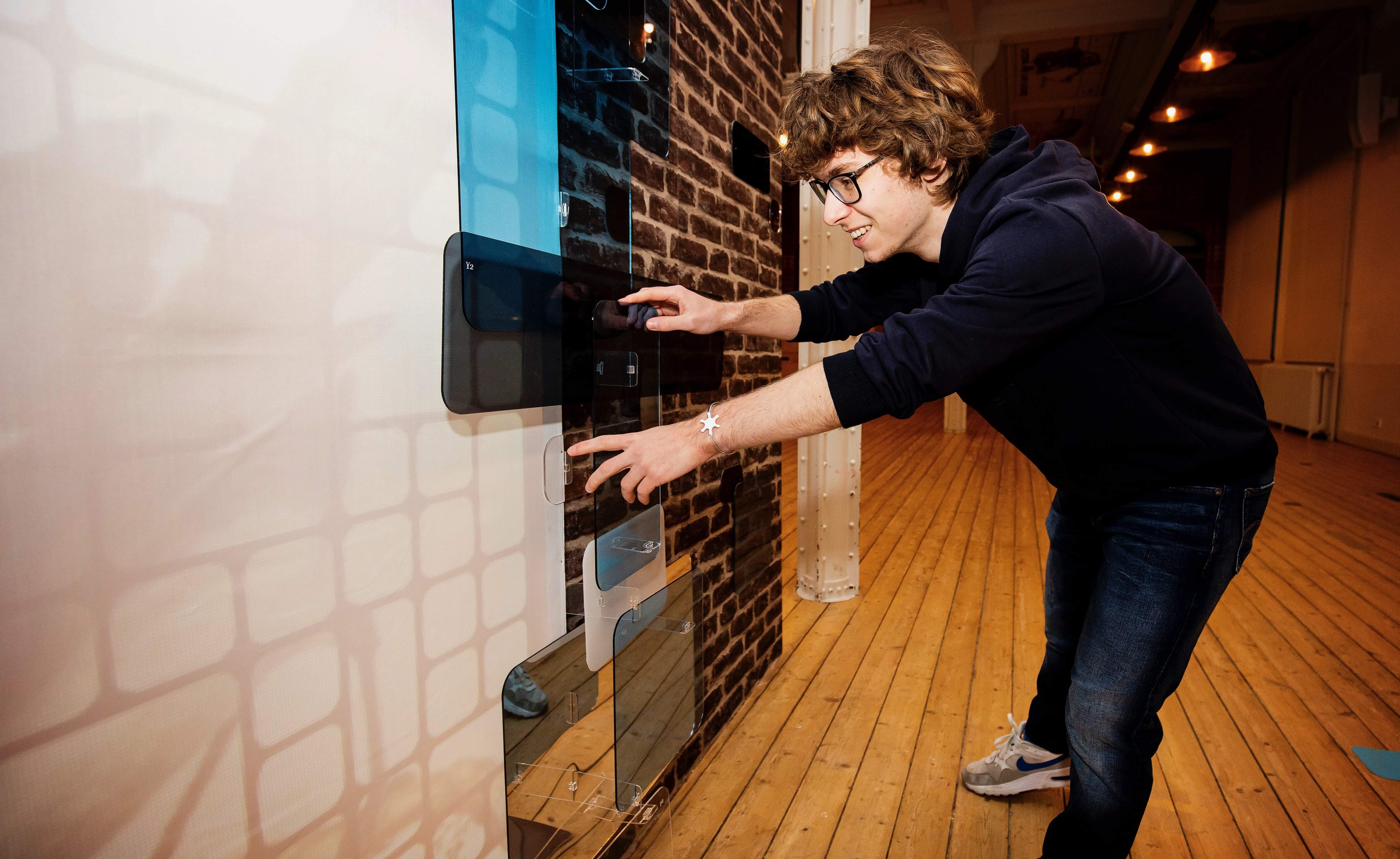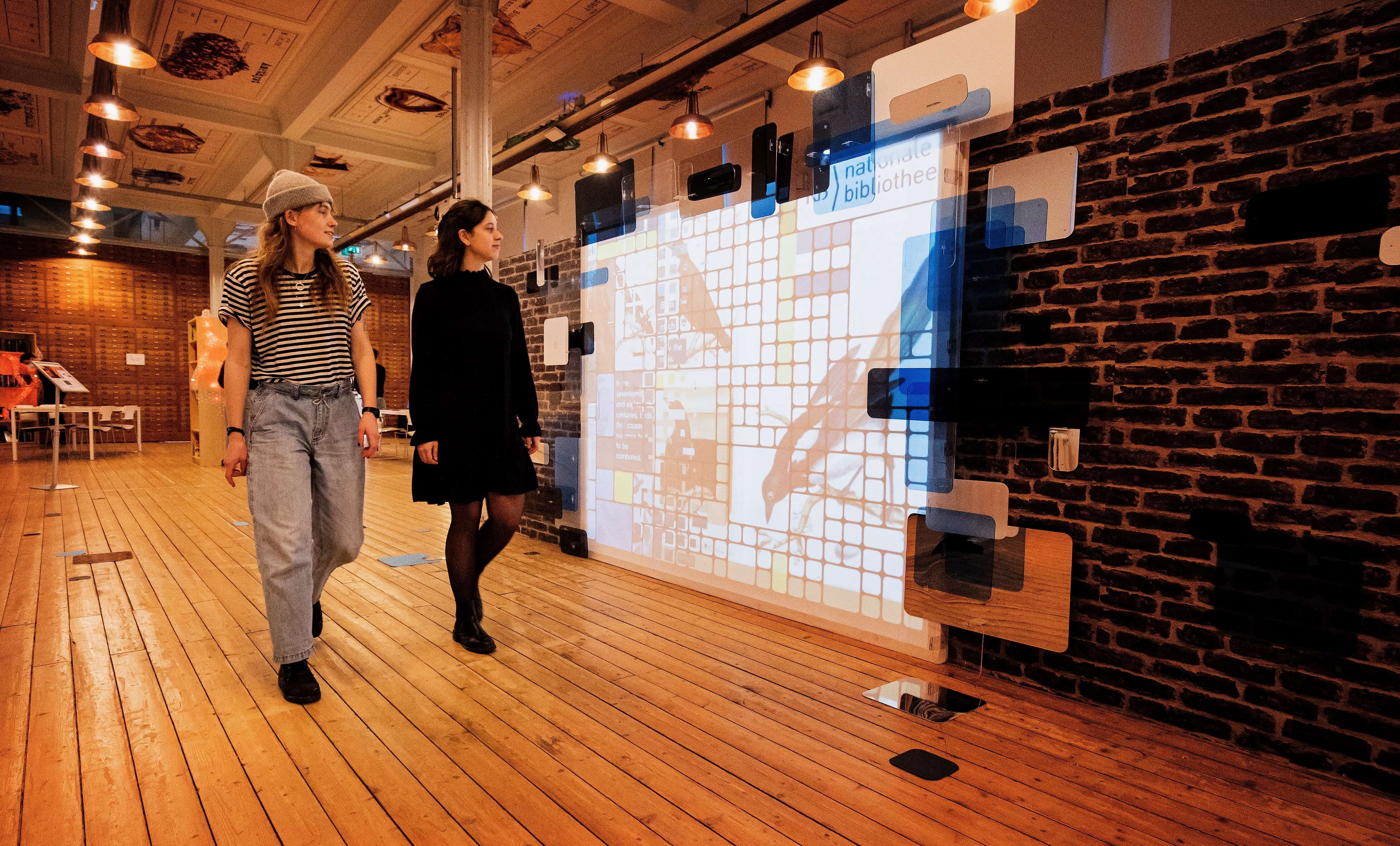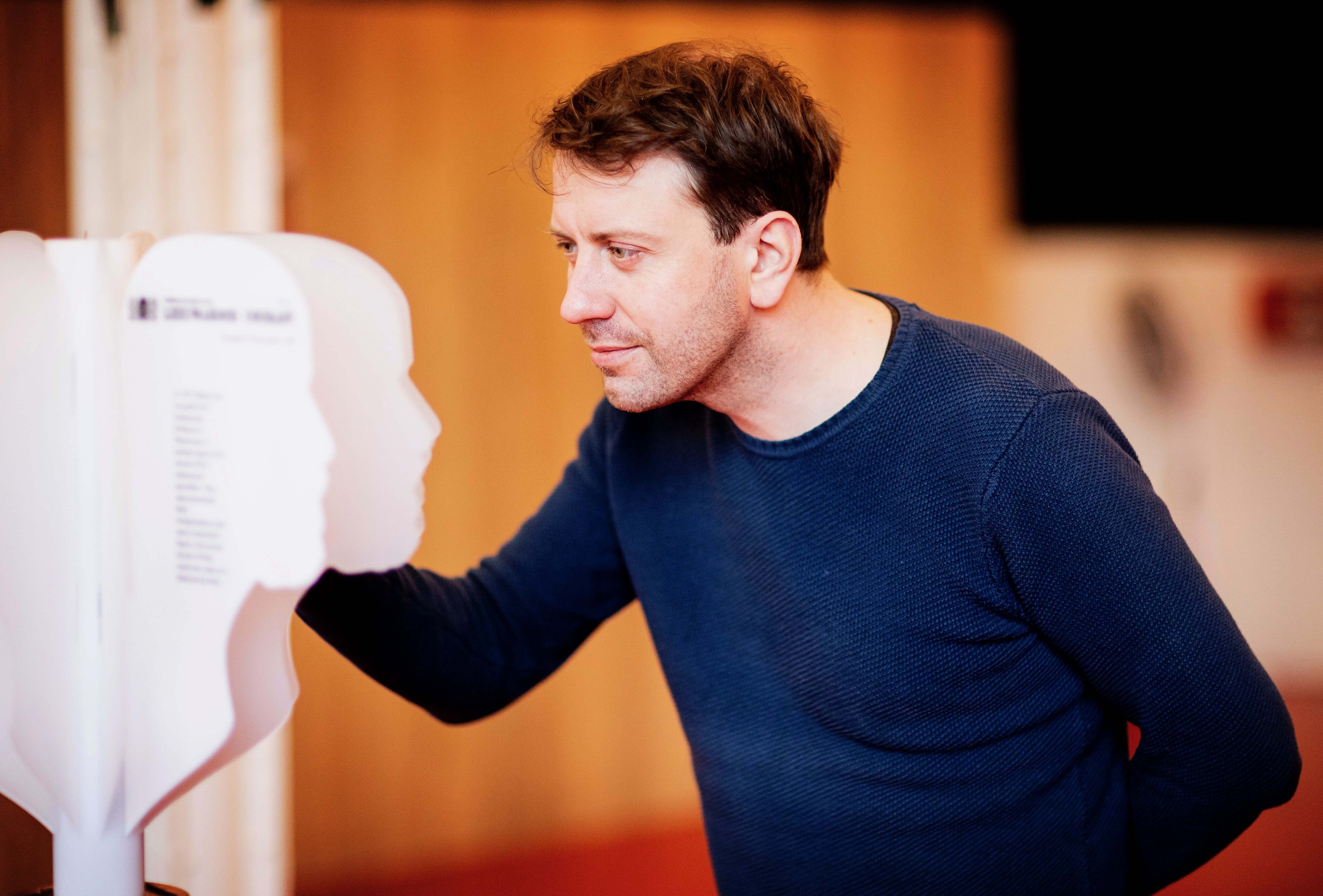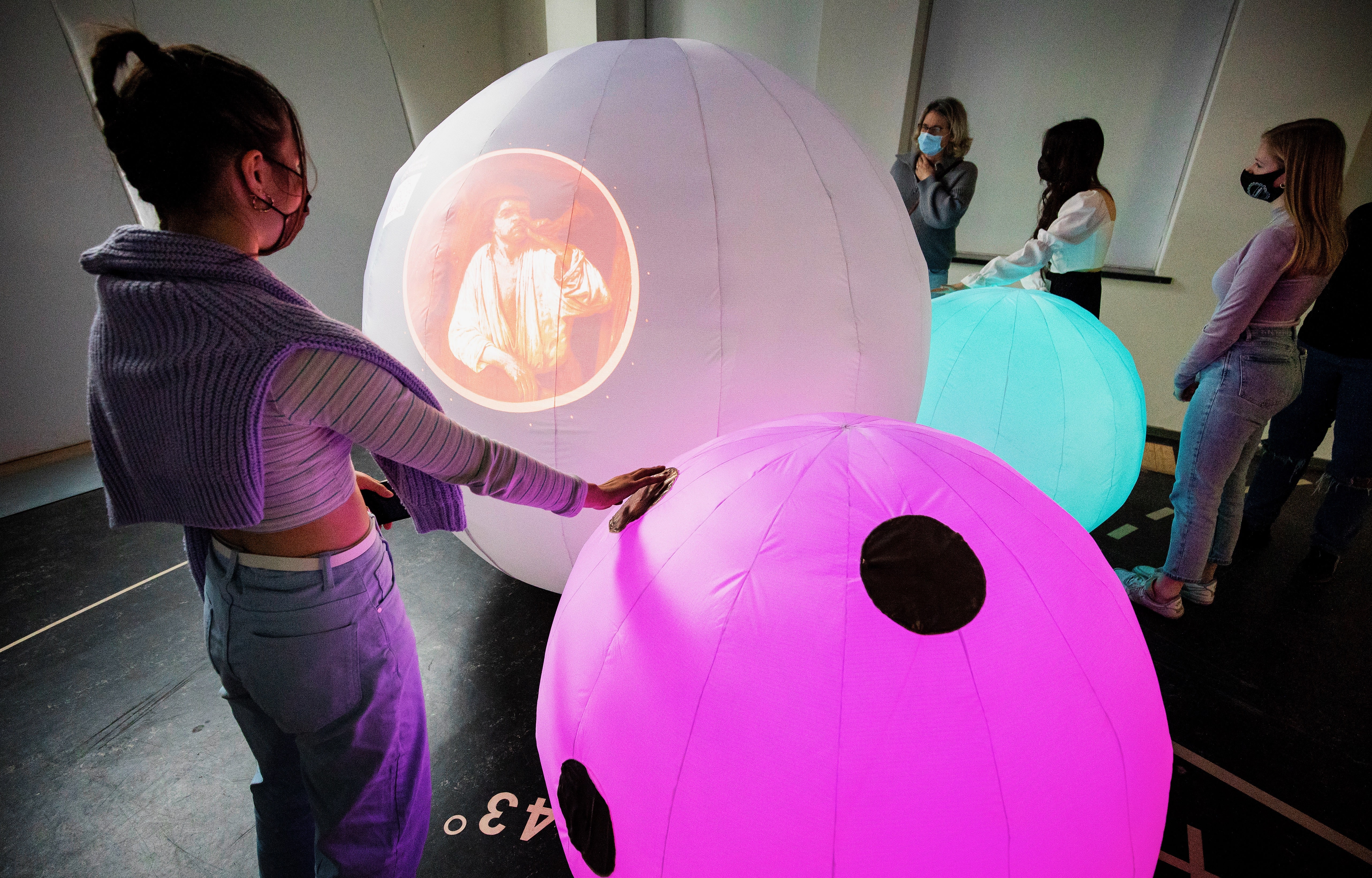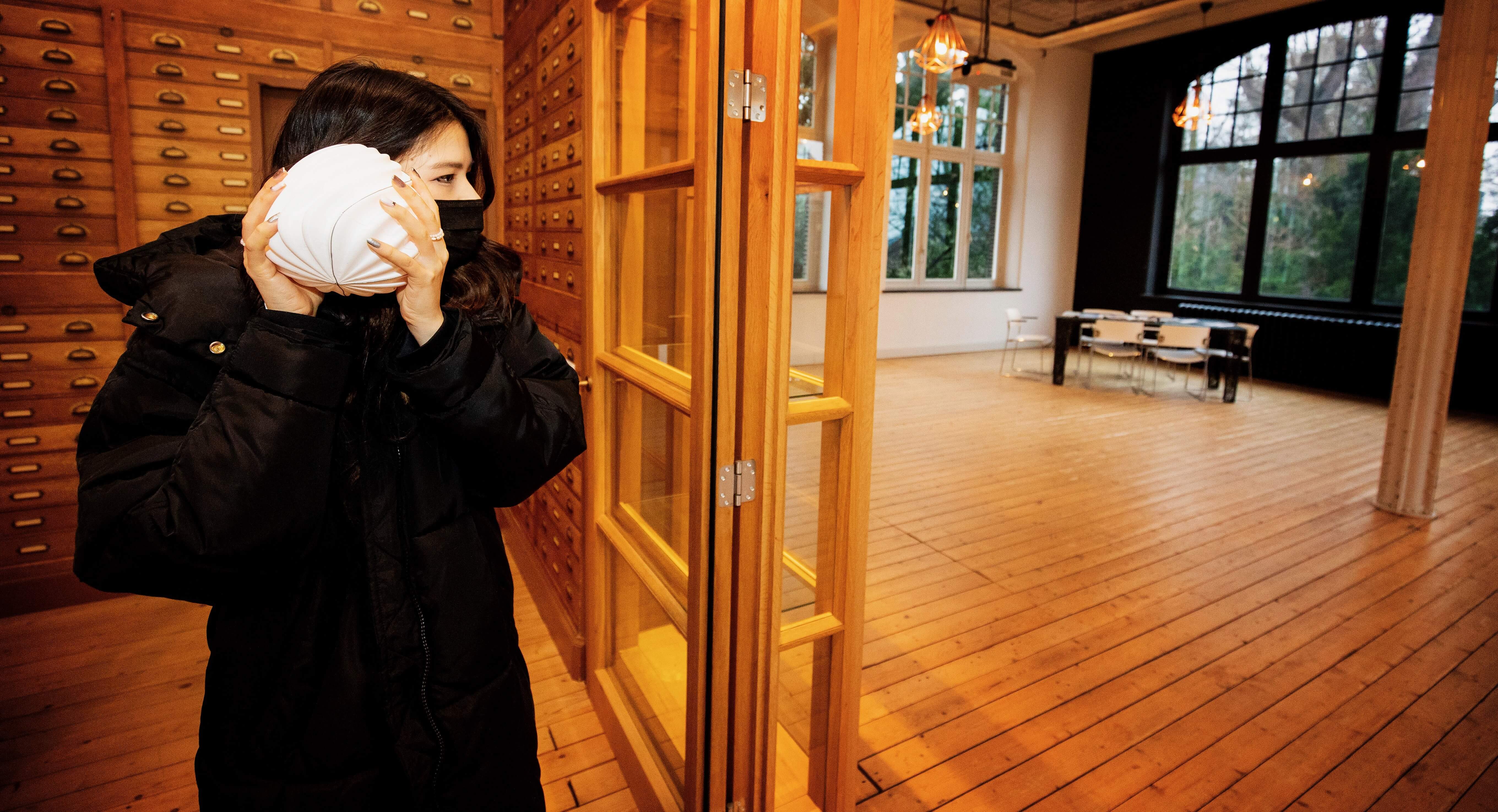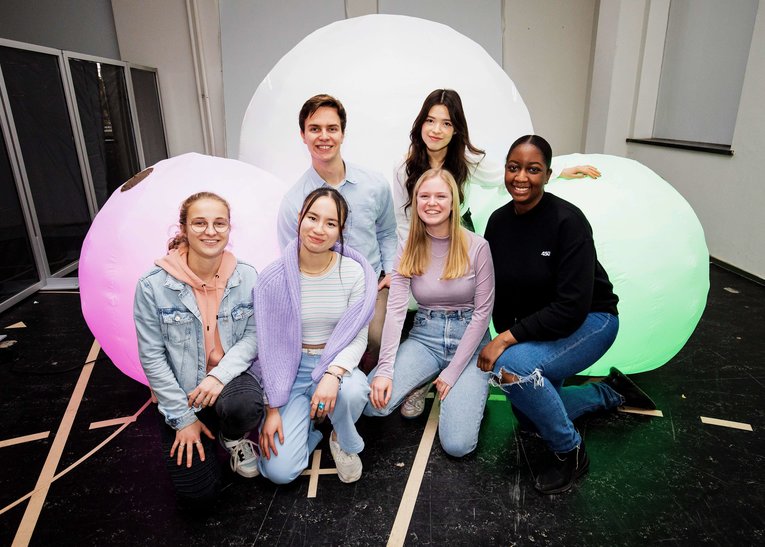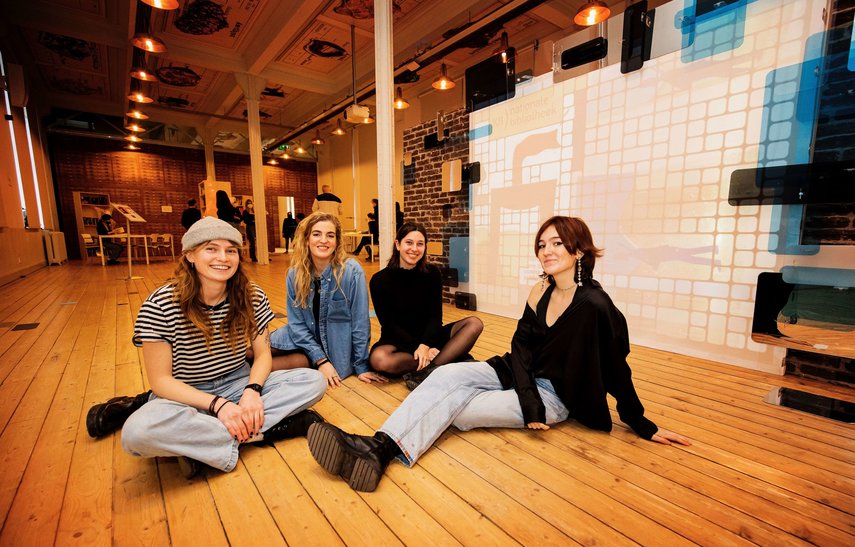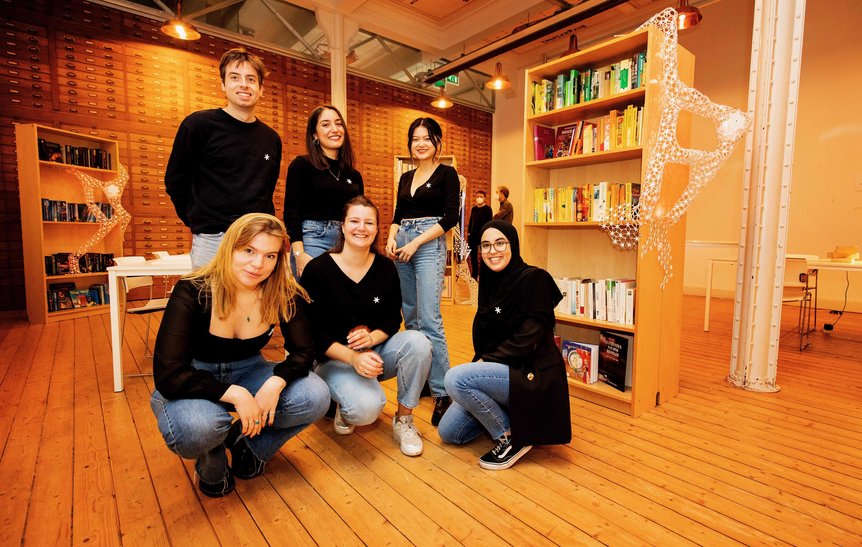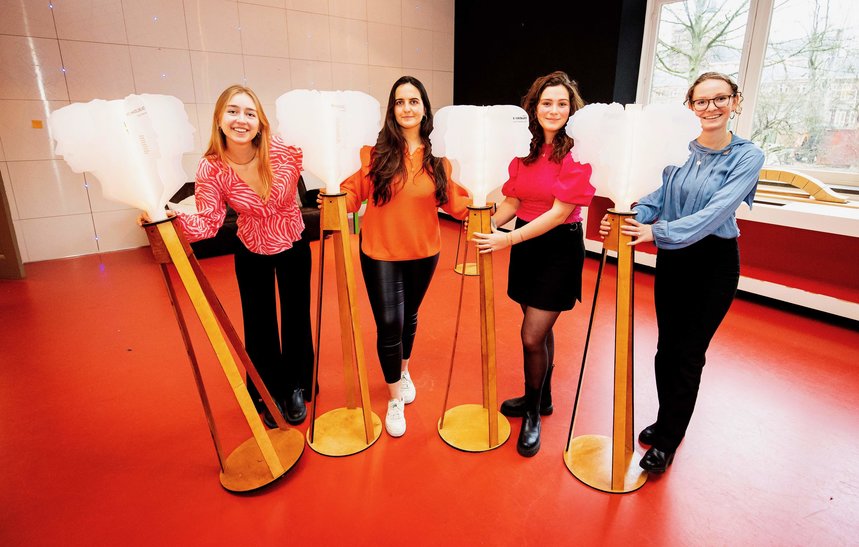TU Delft Interactive Environments minor designs for National Library’s digital collection
This semester, 29 multidisciplinary TU Delft bachelor students took part in the Faculty of Industrial Design Engineering’s Interactive Environments minor, giving them the opportunity to collaborate with the National Library of the Netherlands and create prototypes for a living library. Keep reading to find out more about the course and the Living Library collaboration.
The National Library of the Netherlands
Located in The Hague, the National Library plays a pivotal role in the gathering, safekeeping, and sharing of both written and visual works published in the Netherlands. Through their physical and digital collections, they aim to “further intellectual development, proficiency and creativity in the Netherlands.”
Traditionally, libraries are strongholds for people who enjoy consuming tangible content. However nowadays, more and more content is being published digitally and analogue collections are being digitalised. And thus, the question arises: how can libraries adapt and thrive in the future, while also bridging the gap between their physical and digital collections and spaces?
“While we are a large organisation, we have a limited reach because what we do and who we are is not broadly known among students,” says Jessica Wevers, a member of the National Library’s staff and the main point of contact between the library and the TU Delft students. "I saw it as a challenge to present to them the national library, which is not just an archive of books, but an innovative, inspiring organisation, and their library as well. Our collection is filled with national heritage, their heritage, and we have stories, books, and programming for everyone’s liking."
Creating encounters that provoke our senses
Interactive Environments is a third-year bachelor’s minor taught at the Faculty of Industrial Design Engineering. However it is open to students from across the university, which results in multidisciplinary teams. This range of knowledge and skills enables students to tackle design challenges from various perspectives and learn from one another.
Through the minor, students gain various technical skills, soft skills, and knowledge. "Students get to experience all the phases of the design process: from engaging with people in the field for insights to making sense of sensors and circuitry components which allow objects to become ‘alive’,” says Dr. Patrizia D’Olivo, a coach in the minor and an IDE post-doctoral researcher.
"The course is organised around building prototypes and learning from them. As well as creating an environment where students can fully immerse themselves in a project and deliver large installations, which are fully operational and experiential,” says Dr. Tomasz Jaskiewicz, a coach in the minor and an IDE design fellow in prototyping complexity. “Throughout the many iterations of this minor, I have not encountered two projects that resemble each other. I think this shows the incredible creativity of our students, who often surprise even the most seasoned of coaches.”
Course coordinator and IDE lecturer, Aadjan van der Helm, “We’re in a period of Industrial Design that’s heavily focused on complex and multi-stakeholder problems, designing system interventions by means of apps, screens and algorithms… And while this is very important, it is also important to know how to use physical interfaces to connect the digital world with the physical world. Interactive experiences that blend the physical with the digital to extend the interaction possibilities beyond vision and fingertips to allow people to use all their senses and their entire body.”
The Living Library
The students were divided into five teams and tasked with designing the library of the future – a living library. One that would allow people to encounter and have valuable interactions with digital collections in the physical world.
In addition to creating prototypes that went beyond a simple screen, they were instructed to create designs that had agency. The prototypes needed to have the capacity to learn, evolve, sense and act autonomously. This portion of the designs would be support by researchers from the Delft Design Labs’ Expressive Intelligence Design Lab.
“The uniqueness of this course lies in the opportunity it offers to students. They get to see the results of their creativity tangibly translated into a real interactive environment,” notes Dr. Patrizia D’Olivo.
The basis of this project is linked to TU Delft’s Future Libraries Lab (a collaboration between TU Delft and the KB) and the Open Digital Libraries (an EU project involving the national libraries of the Netherlands, Estonia, and Austria).
"In the Future Libraries Lab we’re always looking for different perspectives on libraries and design. This effort is part of a larger project called Open Digital Libraries. We (members of the lab and our partners at the KB) wanted to focus on creative ways of engaging with library collections. For this we wanted to put the issue before some design students, people who focus on creativity, and see in which directions they would take it,” says Dr. Jeff Love, a research fellow in digital heritage at IDE. “For this assignment, in particular, it’s about how people experience libraries, spaces of trusted information and community embedding with their own set of cultural norms. One goal here is to understand these norms and prod them a little bit.”
What it takes to bring a library to life
Once the students received their design brief, it was time to get down to business. This included, but was not limited to, dissecting the design problem; discussing content; engaging with library staff, patrons, and the public; and various rounds of prototyping.
Throughout the minor, the students were able to gain insights and help from IDE’s coaches (Aadjan van der Helm, Patrizia D’Olivo, Sietske Klooster, Tomasz Jaskiewicz, Wim Schermer, Wouter van der Hoog), teaching assistants (Caspar Krijgsman, Doreen Mulder, Freddy Ueberschär, Koen Weber), experts (Adriaan Bernstein, Dieter Vandoren, Jeff Love, Jered Vroon, Martin Havranek, Martin Havranek, Nazli Cila, Philip Beesley, Teun Verkerk), and members of the National Library’s staff (including, but not limited to Jessica Wevers and Sara Veldhoen).
During the kick-off sessions, the students showed enthusiasm and curiosity. “We got a lot of questions, and they were doing exactly what we hoped for and that was walking around the building, talking to the visitors and passers-by. So, for us it was refreshing to see how easily this was done by them,” says Jessica Wevers.
And what was it like for the students? While it could be a bit challenging at times, due to specific restraints like creating designs without noise (because it is a library after all!), IDE student Nathan Douenburg reflects on the experience, “The freedom we were given was very nice, we could practically make whatever we wanted without limitations.”
EEMCS student Nadyne Aretz adds, “Around every three weeks, you have integration moments. They serve as moments where you can get feedback from the coaches, public, and staff from the National Library. During these moments, they give you indications of whether the installation is to their liking and they brainstorm with you on how you can improve it. They were very enthusiastic and that definitely helped with being enthusiastic yourself.”
The Living Library projects
In the original plan, the prototypes would have been installed at the National Library. However, due to COVID-19 restrictions at the time, this plan wasn't able to come to fruition. Luckily though, the five teams were still able to present their designs to a select number of people at the Science Centre Delft. This included the minor’s academic staff, as well as, representatives from the KB Library and the Science Centre.
“We enjoyed the interactions at the Science Centre a lot. We felt welcome and the set-up was really working. Walking from one installation to another, getting the chance to see it in real life, and let the students explain their motives. It was astonishing to see the speed with which everything was evolving. I liked how the students thought about target groups and locations and really wanted to understand our ‘problem’. And even though the first interactions were merely focused on the usages of the technology, with every integration I saw that our set goal for this project was getting more visible." says the National Library’s representative Jessica Wevers.
Here’s a sneak peek at what the students created, along with a summary of their projects.
The “Roots” concept envisions that the digital collection actually overgrows the physical books and furniture in the library. A library visitor can easily bump into data from the growing digital collection and become inspired in the same way as if they were browsing the physical versions of the books.
Student team: Agnes Lee, Anna Belenguer Martí, Lonneke Visser, Meryem Maskouri, Nathan Douenburg, Pien Adank
The “Reflect" concept envisions the facade of the library building to attract people passing by through light and sound. Once the attention is caught visitors can interact and investigate data from the digital collection by moving their body.
Student team: Blanca Martin Fernández, Eva Le Navenec, Flore Paumen, Juliët Wagemakers, Thomas Sjerps, Lin Zhou
The "Haagse Bakkies" concept exposes a fundamental role of the library. That of being a neutral space where all opinions and viewpoints are archived, but readily available. Situated near the coffee machine the concept highlights one topic, but offers an environment of perspectives for reading and discussing while people enjoy a coffee break.
Student team: Isabella Boezel, Kathleen Panariti, Levie van der Heijde, Nova Meijer, Sonia Alarcon Segarra
The “Kyomi” concept makes it possible for the library to expose their digital collection at a satellite location. For example, at the train station or during an event at a university. The inflatable installation creates two access point to the digital collection of the library to allow data exploration in a social setting.
Student team: Dorrit Huijskes, Eva Jonkers, Gloria Orcan, Kenwyn Hoefnagel, Loes de Vries, Vivian Nguyen
The “Memo” concept aims to attract interest for the library through examples. A visitor can pick up an audio playback shell at the entrance and walk through the library tuning in to several stories as told by the voices of another visitor. The stories relate to personal experiences with the library.
Student team: Isa van Gameren, Katarina Pinto, Loïs Epskamp, Nadyne Aretz, Shiva Aghaei, Sijmen de Vries
Students’ perspectives
We were curious as to what some of the students thought about the collaboration and the course. Thus we reach out to students from the faculties of Industrial Design Engineering (IDE); Architecture; and Electrical Engineering, Mathematics & Computer Science (EEMCS).
Asked about why they chose to enrol in the Interactive Environments minor, Architecture student Loes de Vries says, “I like to work on projects on a larger scale, which is why I chose to study architecture. This minor is about designing an environment, so something on a big scale. The difference between architecture and this minor is that you get to create something that is interactive. I have never done something with coding, so I really wanted to learn that. I also hoped to learn how to design something interactive, because it would be really cool to combine architecture and interactive installations in future projects.”
In terms of skills and/or lessons learned from the course, the students noted that they learned everything from how to use a 3D printer to how to code, and more. “One of the things that I really liked about this minor is that you get to work with easy-to-use electronics. In this way, you can quickly build a semi-working prototype. It was also fun to be able to code for something where you immediately see the results in real life,” says EEMCS student Nadyne Aretz.
And would they recommend this course to other students? IDE student Nathan Douenburg has this to say, “If you want to learn more practical skills, work on a huge project with a cool end result, and make some new friends, I would strongly advise this minor.”
Learn more about their prototypes
To discover more about this year's innovative prototypes and the Interactive Environments minor, visit the course's website.
Courses like this are a reminder that it is just as important to engage our bodies as it is to engage our minds. Being able to physically see something, touch it, interact with can be extremely special when used in the right environments... and that is what this minor does. It inspires the designers of the future to dance between the two “worlds” and create designs that are impactful in the digital world, as well as the physical world.
Aadjan van der Helm, Interactive Environments course coordinator
Aadjan van der Helm
- 015-2781966
- a.j.c.vanderhelm@tudelft.nl
-
Room: B-2-140 StudioMingle
